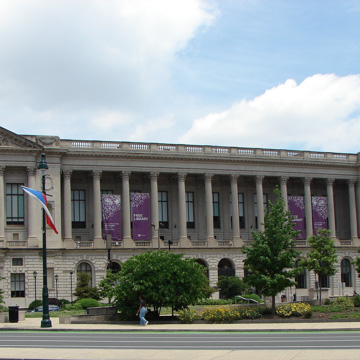The library is a free adaptation of Jacques-Ange Gabriel's eighteenth-century scheme for Paris's Place de la Concorde. The elevated second-story colonnade on an arcuated and strongly coursed base, flanked by gabled pavilions, is repeated in the adjacent family court building by John T. Windrim of 1933 (who imitated the French details more precisely). These frame a distant view to the north of Thomas Ustick Walter's Girard College ( PH127). The proposed Moshe Safdie addition to the rear will follow the example of Philip Johnson's rear addition to the Boston Public Library with a great curving lobby fronting a large addition on the north side of the building. The west side of Logan Circle is bordered by another John T. Windrim design, the Franklin Institute (1934), a landmark in Beaux-Arts classicism. Its monumental portico opens into a grand hall containing a memorial to Franklin (1938), carved of Italian marble by James Earle Fraser, a protégé of Augustus Saint-Gaudens. Mandell Futures Center (1990) at the rear is by GBQC Architects.
You are here
Free Library of Philadelphia
If SAH Archipedia has been useful to you, please consider supporting it.
SAH Archipedia tells the story of the United States through its buildings, landscapes, and cities. This freely available resource empowers the public with authoritative knowledge that deepens their understanding and appreciation of the built environment. But the Society of Architectural Historians, which created SAH Archipedia with University of Virginia Press, needs your support to maintain the high-caliber research, writing, photography, cartography, editing, design, and programming that make SAH Archipedia a trusted online resource available to all who value the history of place, heritage tourism, and learning.







